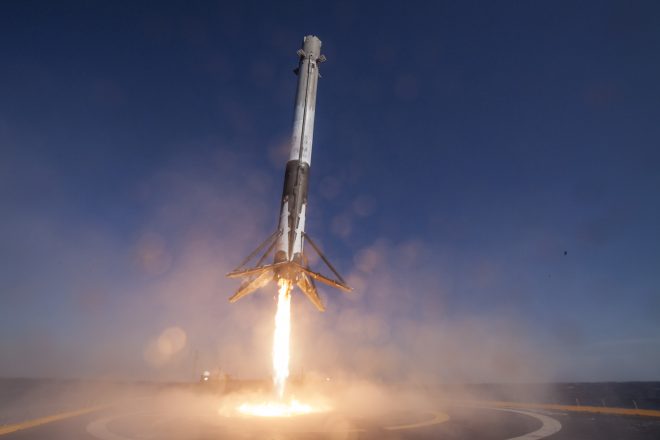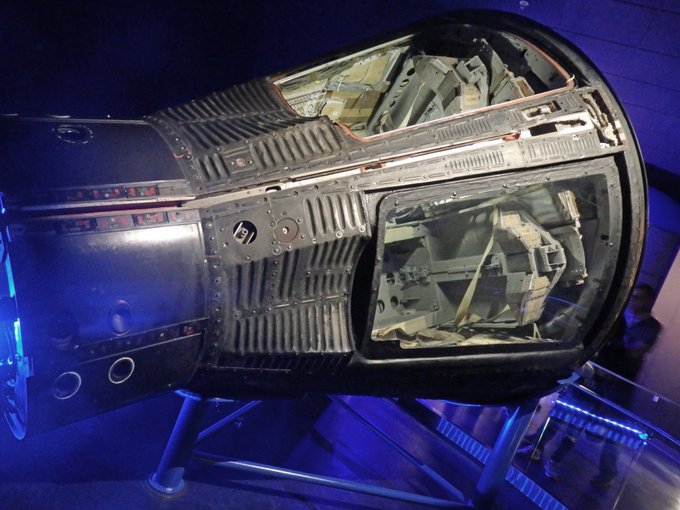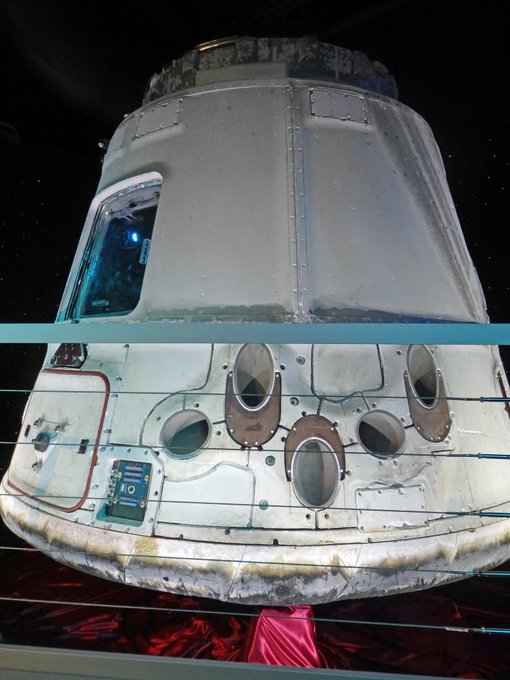
SpaceX’s Falcon 9 rocket makes its first successful upright landing on April 8, 2016. (NASA)
SpaceX will send two private citizens around the moon in late 2018.
Founder Elon Musk made the major announcement on behalf of his space exploration company at a press conference February 27.
The moon mission will take the two people — who are paying privately to go — around the moon and then will return to Earth.
Musk said in the announcement that the entire mission will last about one week and the spacecraft won’t land on the surface of the moon.
The identities of the two individuals haven’t been revealed.
The space exploration company, which Musk founded in 2002, has been at the cusp of innovation with its privately-funded rocket launches. Its original vision was to make space transportation far less costly, and the moon mission will achieve that. It’s another step toward its ultimate goal of sending a human to Mars.
Here’s what you need to know about the mission:
1. SpaceX Will Launch a Dragon 2 Capsule
In SpaceX’s announcement, it gave details on its plan to launch the two private citizens to the moon. The press release stated that SpaceX will fly its Dragon Version 2 spacecraft to the International Space Station in “automatic mode” in the coming months. The spacecraft won’t have people on board the first time. Following that launch, another mission with a crew aboard will reportedly take place in spring 2018. It will use the Falcon Heavy rocket, which will have its first test flight in the summer.
The Dragon 2 spacecraft has already been launched numerous times — without a crew — and is designed to carry humans. The rocket has four thruster pods each with having two powerful engines. The Dragon 2 is capable of holding up to a seven-person crew.
The spacecraft was first unveiled May 29, 2014 at a SpaceX event.
2. It Will Be the First Time in 45 Years Humans Go Into Deep Space
When the SpaceX moon mission launch takes place in 2018, it will be the first time in 45 years anybody has traveled to deep space.
Deep space exploration is something that the creation of the ISS has helped NASA bring back to the forefront. NASA said in 2016 that there is “a new generation of U.S. commercial spacecraft” and that “rockets are supplying cargo to the space station and will soon be able to launch astronauts once again from U.S. soil.”
3. The 2 People Will Undergo Extensive Testing
As astronauts have to do before orbiting into space, the two people who have been selected will undergo extensive testing and training prior to the late-2018 launch.
SpaceX will conduct health and fitness tests on the pair. The initial aerospace training process will start later this year for them. Musk said that the company has received “strong interest” from others that want to head to the moon, and he expects more launches to occur soon.
SpaceX said in its announcement that the two people have already paid a “significant deposit” to make the trip to space, though it’s unclear at this time exactly how much money that is.
4. SpaceX Worked With NASA to Make the Mission Happen
Since its inception, SpaceX has worked with NASA on programs and pieces of technology. It thanked the government agency for its willingness to assist in the privately-funded moon mission in the announcement.
NASA created the Commercial Crew Program in 2011, which aimed to work with companies in the aerospace industry to “develop and operate a new generation of spacecraft and launch systems capable of carrying crews to low-Earth orbit and the International Space Station.”
The program’s website continues that commercial transportation to and from the ISS will “provide expanded utility, additional research time and broader opportunities of discovery on the orbiting laboratory.”
SpaceX said in its statement that NASA’s program funded most of the money needed for its Dragon 2, which will be a key to the mission. It also said NASA’s funding was integral in making use of the Falcon Heavy rocket.
5. The Launch Will Take Place In Cape Canaveral
SpaceX said that lift-off will occur at Kennedy Space Center on Pad 39-A. The launch pad is located near Cape Canaveral, Florida and is the same pad that was used for lunar missions by NASA’s Apollo program.
The complex has since been modified for the NASA’s Space Shuttle program. It was the pad that previously launched SpaceX’s Falcon 9 and is currently undergoing modifications to support the launches of Dragon 2 and Falcon Heavy.
The first launch on Pad 39-A was In 1967 — Apollo 4 — and its most recent was February 19 with the Falcon 9.





